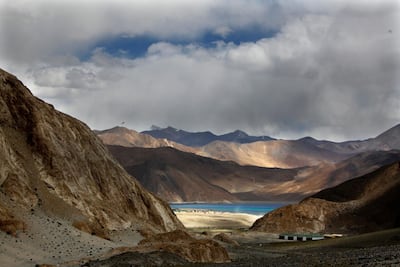Normally, when border clashes occur in remote areas of the Himalayas, the hostilities are between India and Pakistan, two nuclear-armed states whose enmity dates back to the religious violence that occurred during Partition in 1947. So the fact that the latest eruption of tensions has taken place between India and China, countries that between them boast a population of 2.7 billion people, adds an entirely new – and troubling – dimension to the geopolitical dynamics of one of the world's most inhospitable regions.
The precise details of what occurred in the Galwan Valley, in Indian-controlled Ladakh, earlier this week have still to be verified. But what is clear is that a long-running territorial dispute between Delhi and Beijing in this region has resulted in violent clashes that have left at least 20 Indian soldiers dead. The number of Chinese casualties has yet to be disclosed. It is the first time in 45 years that the rival claims have resulted in bloodshed, a development that inevitably raises questions about the possibility of a wider conflict between two nuclear-armed neighbours, who share a 4,000-kilometre long border, as they make the transition to becoming two of the world's leading economic powers.

The latest tensions over what is known as the Line of Actual Control (LAC) have been building for about a month after the People’s Liberation Army (PLA) of China broke off from a series of exercises being conducted in the area in April and occupied a patch of around 60 sq km of Indian territory, including a series of remote border posts along the LAC. This was followed by PLA forces digging in and bringing tanks and artillery to the border. India protested against China’s occupation of three sites in Ladakh, which it regarded as Indian territory, and responded by rushing thousands of troops of its own to meet the incursion. In May, this led to two clashes that resulted in serious injuries from both countries.
With both India and China seemingly keen to resolve the stand-off, a period of intense diplomatic activity followed aimed at easing tensions.
Earlier this month, India announced that Beijing had agreed to withdraw the troops, tents and vehicles that it had positioned in the Galwan Valley, with Delhi taking reciprocal measures. By the end of last week, the discussions had progressed to the point where Gen MM Naravane, the head of the Indian Army, was able to declare that talks with his Chinese counterparts had been “very fruitful”.
But the general’s assessment proved to be wildly optimistic as, within 48 hours, the two sides were involved in hand-to-hand fighting more than 4,000 metres above sea level along jagged cliffs high above the Galwan Valley.
Trouble flared on Monday night when an Indian military delegation met with their Chinese counterparts as part of ongoing “de-escalation” talks. To emphasise the peaceful nature of the discussions, both sides were unarmed. Even so, it is now reported that a bitter argument took place, which resulted in a brawl. Indian officials claim that their soldiers were attacked with clubs wrapped in barbed wire and were pushed off the cliff during the bitter fighting in which Col Santosh Babu, who was leading the unarmed Indian patrol, was the first to perish. The Indians then retaliated with weapons of their own, and the ensuing fight is said to have lasted for several hours.
Beijing has so far not admitted to any casualties, although the Indian authorities are claiming that more than 40 Chinese troops were killed or injured in the clash.
Both Beijing and Delhi have pledged to resolve the dispute peacefully. Nevertheless, the violence has provoked an angry response from both governments.

China has accused India of reneging on earlier agreements, and claimed that Indian forces “twice crossed the border line for illegal activities and provoked and attacked Chinese personnel". Meanwhile India’s Prime Minister Narendra Modi vowed that “the sacrifice of our soldiers will not be in vain. India wants peace, but when provoked, it is capable of giving a fitting reply".
Tensions over the disputed territory are not new.
They can be traced back to 1914 when British, Chinese and Tibetan representatives gathered in the Indian hill town of Shimla to settle the status of Tibet. The ensuing treaty, which the Chinese refused to sign, guaranteed autonomy for the region. But the result is that Beijing has challenged the settlement ever since. In 1962, this led to India and China fighting a fully-fledged war over Ladakh, and the last time the two sides exchanged gunfire was in 1975.
Since then both sides have worked hard to avoid further flare-ups and, in 1988, reached a compromise on the border area.
The recent rise in tensions can be linked to Beijing's disquiet over the Indian government's recent decision to revoke the constitutional autonomy of Jammu and Kashmir, as well as its proposal to carve Ladakh out of that state into a separate territory that is directly administered by Delhi. For its part, India has become increasingly concerned about China's more assertive foreign policy approach under President Xi Jinping, which has resulted in a significant increase in Beijing's influence in Pakistan, Afghanistan, Nepal and Bhutan, while the Indian military has raised concerns about the activities of Chinese warships in the Indian Ocean.
The challenge now is for Delhi and Beijing to resolve their differences before the tensions take on an even greater significance. For, in a world where India and China have staked their claim as major powers, both parties need to find a way to co-operate with each other if further unnecessary bloodshed is to be avoided.
Con Coughlin is the Telegraph’s defence and foreign affairs editor























